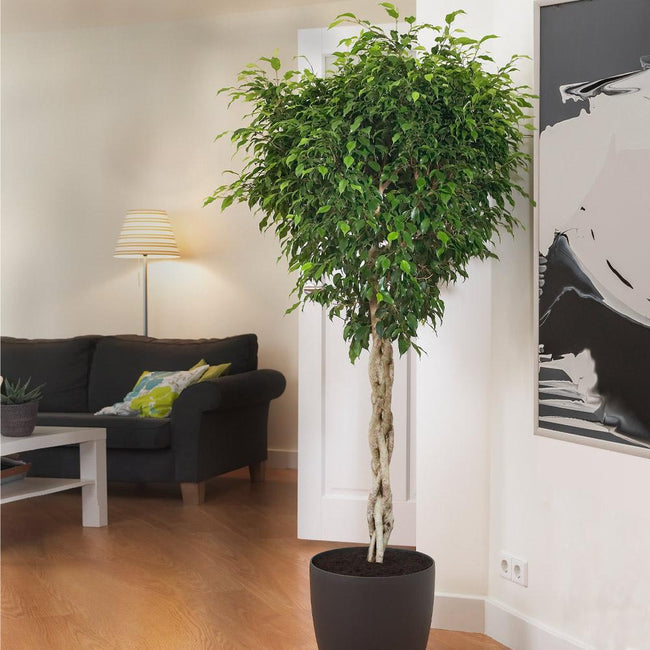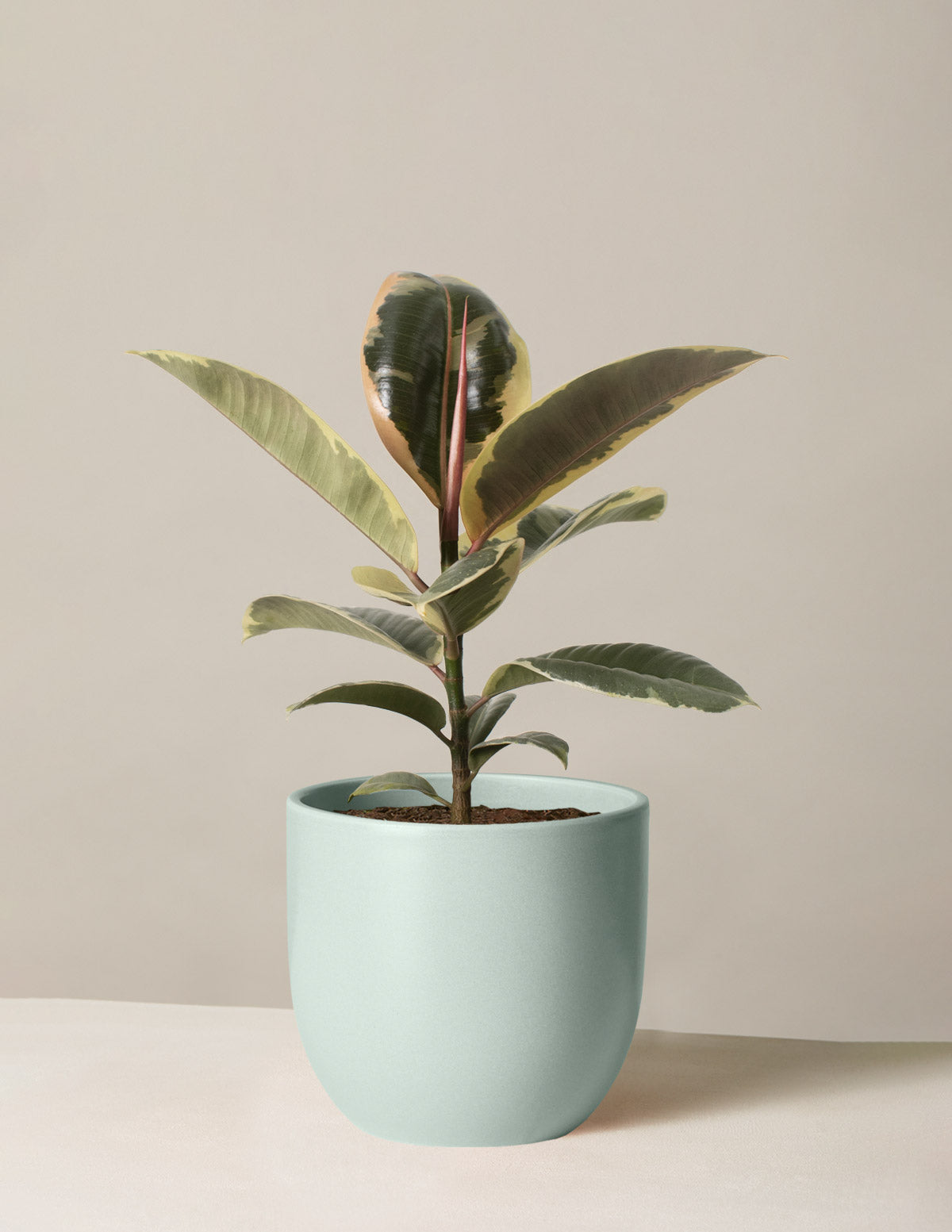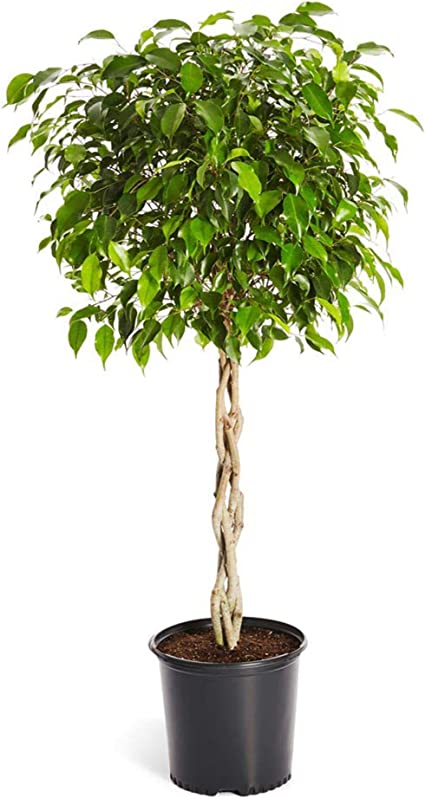
Ficus has been very popular as a houseplant for years. Actually, it is not possible to talk about “the” Ficus: there are hundreds of species that vary in size, shape and color. In the natural habitat, there are species that can have a circumference of 100 meters. As a houseplant, we sometimes see a ficus of less than 10 centimeters in height.
Yet it is possible to say something about the care of “the” Ficus. You can read all that information on this page. Under the care information, the most common species are discussed. If a particular species has specific care requirements, you’ll read about them there. Finally, at the bottom of this page is the answer to frequently asked questions about Ficus.
Table of Contents
Ficus care
Habitat and light
Ficus is one of the few houseplants that can stand in the full sun. Even stronger: for a nice growth and a healthy Ficus, a number of hours of direct sunlight is very important. A place near a window is the best place. A Sanseveria, for example, can stand in the sun as well as a Ficus, but the vast majority of houseplants should not.
After buying the Ficus, it is important to slowly build up the amount of sunlight. Like Banana plants, they are grown under artificial light. Immediately after purchase, they are not yet used to full sun. Move the plant a little closer to the window every day until the desired location has been reached.
Your Ficus will automatically tell you if it gets too much or too little light. When there is too little light, you will see that the growth slows down and the leaves become dull in color. When there is too much light, brown spots appear on the leaves. Pay close attention to the plant’s signals and adjust the location accordingly.
Habitat and temperature
A second important aspect of the location is the temperature. Ficus is a fairly strong houseplant that can take a beating, but there are certainly things to take into account. In terms of temperature, the normal room temperature is fine. It is especially important to avoid strong temperature fluctuations. These are caused by an air conditioner, open window or a radiator.=> Prefer a houseplant that is a little less sensitive to temperature fluctuations? Then check out the Yucca or the Zamioculcas (Zz plant).
Repotting Ficus
A part of the maintenance of Ficus that comes back every 2 years: repotting. Repotting keeps the plant healthy. After a while, the plant runs out of space and there is hardly any potting soil left in the pot where no roots grow. As a result, there is hardly any room for moist soil from which Ficus can extract water. By providing more space, by repotting, you provide the plant with its needs.
Ficus should preferably be repotted in the spring. Some Ficus species can grow quite large and repotting is quite a job. Unfortunately, it is sometimes inevitable that some branches and/or roots get damaged during repotting. By repotting in spring, Ficus has time to recover from this during the entire growing phase. It is not surprising if you see the plant make a growth spurt after moving to a new pot!
Which pot to use?
The choice of a pot is completely free. There is only one requirement: ensure proper drainage. This is important because Ficus absolutely does not like standing in wet soil for long periods of time. Wet soil is different from slightly moist soil (which Ficus likes). Soaking wet soil around the roots causes all kinds of problems and should therefore be prevented by means of a good drainage:
- Drill holes in the bottom of the decorative pot. Because the ornamental pot is often made of stone, it may break. Drilling must therefore be done very carefully. Do this very slowly and certainly not on the impact drill. Through the holes in the bottom excess water can drain away.
- Use a plastic inner pot. This is also called a grow pot and it already has holes in it. This growing pot is then placed in the decorative pot. When watering, the ornamental pot can easily be placed in the sink and excess water can drain away. After all the water has drained away, the plant is placed back in the decorative pot.
Ensure higher humidity
Ficus plants can be found in large parts of the world. There are hundreds of known species. Most of the species we keep as houseplants come from the tropical rainforests in Asia. There the humidity is a lot higher than here. Ficus as a houseplant is not used to this and it is important to improve the conditions here.
You can recognize the need for higher humidity by brown edges on the leaves of Ficus. You may also find that the leaves become dry and hard. These brown and dry leaves do not recover, but you can prevent them in the future. Mist the leaves with a plant sprayer on mist setting until they are completely wet.
Note: misting the leaves can be done just fine with tap water, but this will leave white stains on the leaves. When the water dries up the lime remains and you can see it. It is not harmful and can be wiped off. Would you rather not do this? Then use rainwater.
Plant nutrition
Like every plant, Ficus needs plant nutrition. This need is greatest in the growth phase of the plant. The growth phase is easily recognised by the appearance of new leaves and/or new shoots on the plant. Normally, this begins in the spring and ends in the fall. In some cases, a Ficus will continue to grow into the winter. In that case, the need for nutrition also remains.
If you give plant food, do this exactly according to the instructions on the label. This means: dilute it well. Plant food is highly concentrated. If it is not diluted properly, there will be an excess of nutrients in the soil and this will cause damage to the roots of Ficus.

How many Ficus species are there? The answer to this question varies a little from source to source. Approximately, there would be about 750 Ficus species. They grow in several parts of the world. For example, Ficus grow in Asia, but also in America. Because their habitat is so vast, there are so many different species: in each area, the conditions are different and the plant adapts itself accordingly. As a houseplant we mainly know the following species:
- Ficus gin seng
- Ficus elastica Chloe
- Ficus elastica robusta
- Ficus abidjan
- Ficus umbellata
- Ficus elastica belize
- Ficus natasha
- Ficus moclame
- Ficus itissima
- Ficus benghalensis
- Ficus amstel king (Ficus binnendijkii)
- Ficus benjamina
- Ficus melany
- Ficus lyrata
FAQ
Ficus leaves hanging down
With many houseplants, like the Calathea, drooping leaves are a sign of too much water. With Ficus, this can also be the cause – always check first – but more often than not, the cause of drooping leaves lies elsewhere. For example, Ficus does not like a shady spot. A place with too much shade and too little light will cause the plant to droop. An excess of nutrition can also be the cause of this problem. Always give nutrition according to the packaging, never too much.

Can you put a Ficus outside? You can, but there are some conditions. It is worth noting that Ficus originates from warm and tropical areas. As an indoor plant, the transition is not so bad, but outside, the temperature is often considerably lower than in its natural habitat. Therefore, only place Ficus outside when temperatures are above 15 to 20 degrees.
It is also important to choose a good location. Never put your Ficus outside in the wind and try to avoid the full sun. As soon as the temperatures get lower in autumn, it is time to bring the Ficus back inside.
Is the Ficus susceptible to diseases?
Ficus is known as a fairly strong houseplant that is not very susceptible to diseases. A problem that unfortunately does occur regularly: lice. There are different kinds of lice that Ficus can suffer from, such as mealybugs and leaf lice.
As for many problems, prevention is better than cure. Therefore, inspect the leaves monthly for lice. These are mainly found close to the stem on the young leaves. If you see one, rinse the Ficus with lots of water. You can do this in the shower or, in summer, with the plant sprayer. If the problem is still not solved, you can switch to a pesticide.
My Ficus is getting too big!
If your Ficus gets too big, there are two things you can do. The most obvious option is to prune the Ficus. Another option is to stop repotting the Ficus. Because the roots are running up against the limits of the pot, it will not grow much more. It is not the best solution for the health of the plant. It is best to postpone repotting for a maximum of 1 or 2 years
